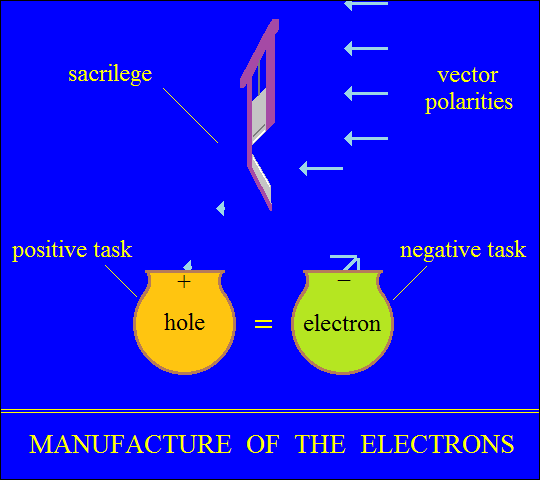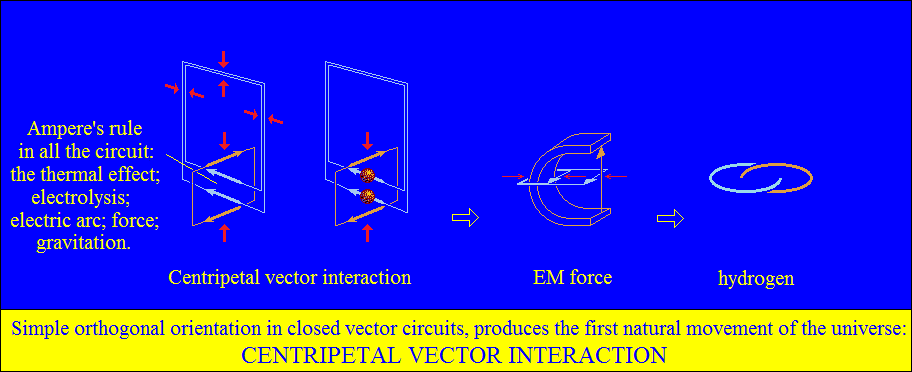-
Dilemma
of electric current
Entertainment
The electric current are transported polarities of electrons or, a vector
phenomenon?
In the specialty terminology, the transport concept is enshrined, so we
say the transported current;
-
flowing a current; crossed
by a current; traveled by a current; and so on.
No one can think that this conception is false, as they once did not think,
that the earth is spinning.
Dear readers, resolve this dilemma with your own thinking.
Is the electrical current formed by electric charges transported by electrons
a bluff?
The idea that electricity is something that can be taken with a bucket
from one place
-
and placed in another
is officially accepted.
No no no! In the bucket aren't electrons!
-
The bucket is even
the electron, the one carrying the "load" unit,
is the packing, the courier, the wagon that transports electrical charges
among the atoms
(perhaps electricity is dangerous if it is left free).
How? What is electricity? Nobody knows. Electricity and gravitation are
twin mysteries.
Electricity is the charge of the electron. The electron is the load carrier,
he must know
Meditate on!
The electric battery, positive terminal is on an ant hill without
ants (empty)
and on the negative are perched ants (electrons).
The electric battery, is a string of compasses with a positive
needle to the north
-
and a negative needle
to the south (information)
Magnetic effect of the electric current: Hocus Pocus! A magnetic
field appears.
What is the electron?
In the corpuscular conception, the electricity had to have an atomic structure,
like matter.
First, the name of the particle, the electron, was proposed, then the
electrical charge size were resolved. The idea was immediately taken up
in other fields,
-
photon for light, quanta
for energy, the Higgs boson for mass.
The empty space around the atom, observates in Rutherford experiment,
demonstrates that atoms are bonded to each other by electrical and magnetic
currents (vector field).
In this structure, there are neither motives nor conditions for the movement
of rotation and revolution.
The reasons that there are no solitary formations,
and the conditions are the existence of the field of heterogeneous forces.
Yet the electron has been accepted as an atom of electricity and as a
planet in the atomic physics.
What is elementary electric charge?
The elementary charge carried by the electron is the smallest amount of
negative electrical polarities.
A negative electrical polarity involves more negative vector halves, so
elemental load can not be elementary unless it has only the negative half
of a single vector.
Otherwise, the "negative halves" of the electron it each other
rejecting!
-
The electron is an absurd
concept.
The electrical charges are polarities of vectors "decapitated"



